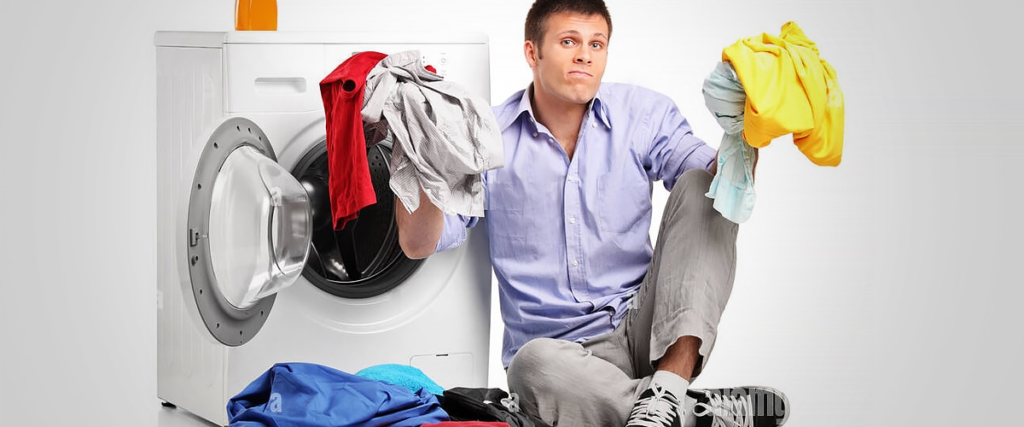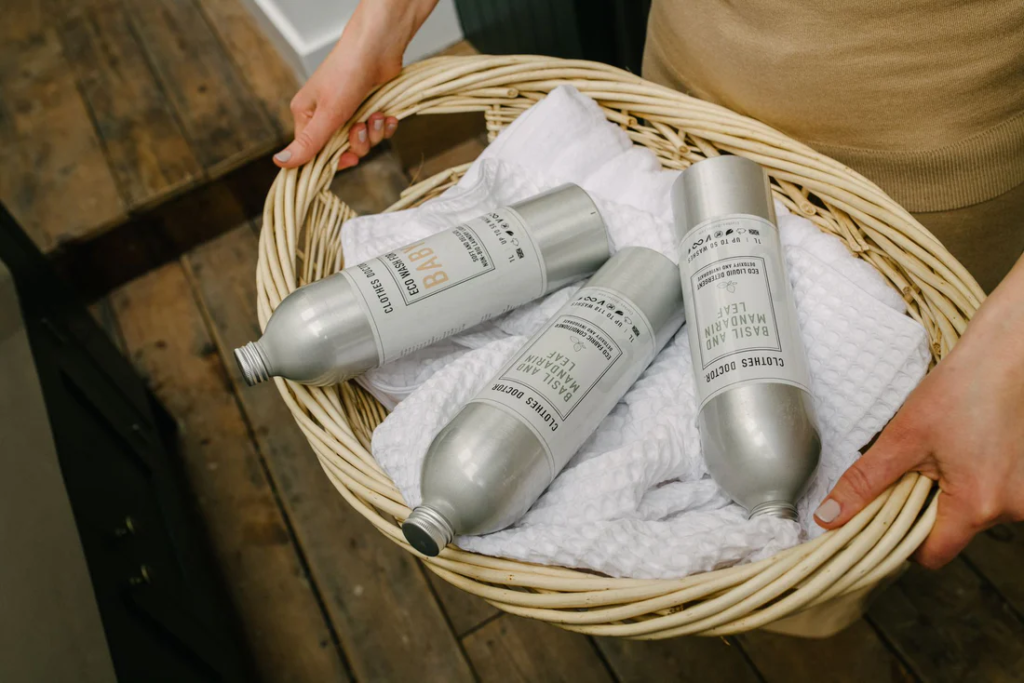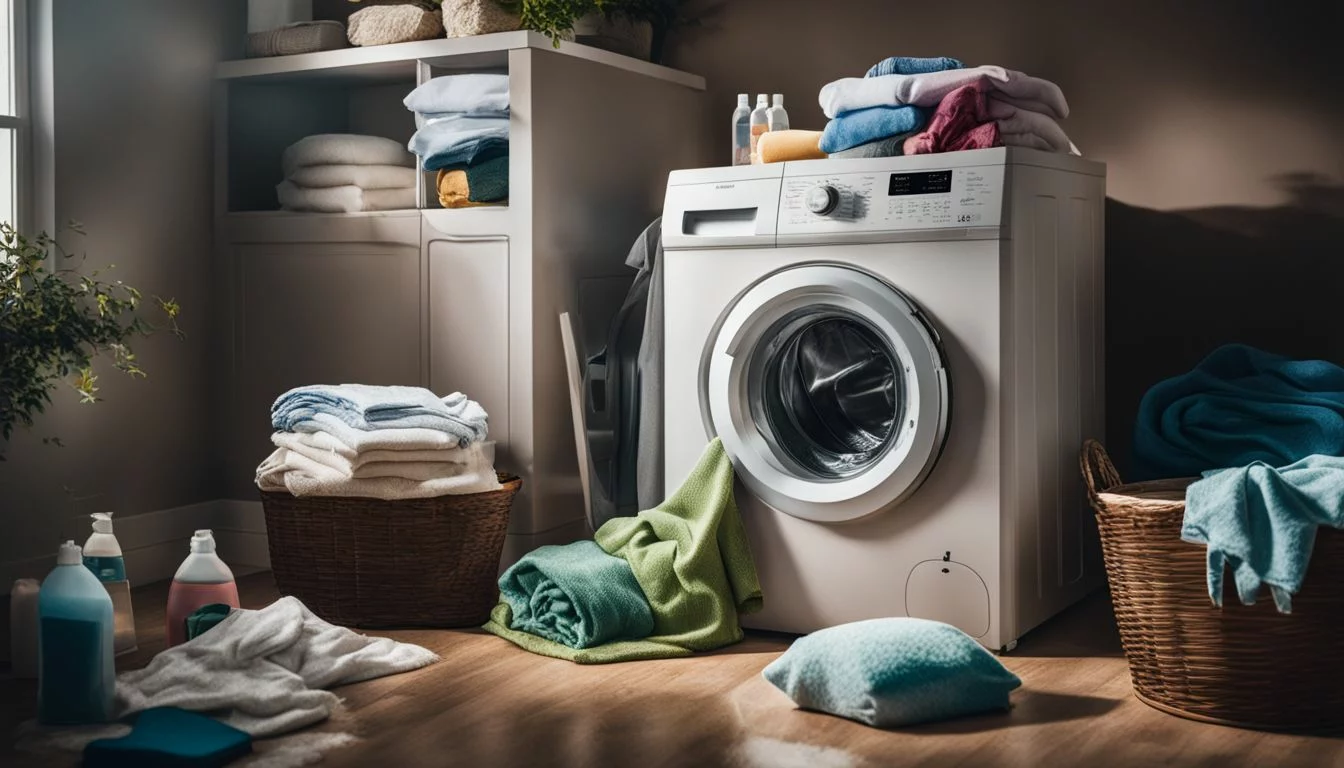Laundry is a household chore that everyone deals with, yet it’s also surrounded by numerous myths and misconceptions. From the best ways to sort clothes to the effectiveness of various detergents and washing methods, people often rely on outdated or incorrect advice. These laundry myths can lead to ineffective cleaning, wasted resources, and even damage to clothing. In this article, we’ll debunk common laundry myths, separate fact from fiction, and provide you with the most accurate information to improve your laundry routine.
Table of Contents
1. Myth: Washing Clothes in Hot Water is Always Better

The Myth:
Many people believe that washing clothes in hot water is the most effective way to remove dirt, bacteria, and stains. It’s often assumed that the hotter the water, the cleaner the clothes.
The Reality:
While hot water can help dissolve certain types of stains and kill bacteria, it’s not always the best choice. Hot water can cause fabrics to shrink, colors to fade, and delicate materials to wear out faster. In fact, most modern detergents are designed to work efficiently in cold water. Cold water washing is gentle on fabrics, helps retain colors, and is energy-efficient, which is better for both your clothes and the environment.
When to Use Hot Water:
- Whites and Heavily Soiled Items: Use hot water for whites, towels, and bed linens, as well as heavily soiled items that may need extra sanitizing.
- Removing Specific Stains: Hot water can help dissolve grease and oil-based stains, but check care labels and stain removal guides before using hot water.
2. Myth: More Detergent Means Cleaner Clothes

The Myth:
It’s a common belief that adding more detergent to your laundry load will result in cleaner clothes. The logic behind this myth is that more soap equals more cleaning power.
The Reality:
Using too much detergent can actually have the opposite effect. Excess detergent can leave residue on clothes, making them feel stiff, sticky, or even causing skin irritation. Additionally, too much detergent can overwhelm your washing machine, leading to soap buildup in the drum and hoses, which can cause malfunctions and unpleasant odors.
The Right Amount:
- Follow Manufacturer’s Instructions: Always follow the detergent manufacturer’s instructions regarding the appropriate amount of detergent for different load sizes.
- Consider Load Size and Soil Level: For small or lightly soiled loads, use less detergent. For large or heavily soiled loads, you may need to use the maximum recommended amount, but never exceed it.
3. Myth: Fabric Softeners are Necessary for Soft Clothes

The Myth:
Fabric softeners are often marketed as essential for keeping clothes soft and static-free. Many people believe that without fabric softener, their laundry will come out rough and uncomfortable.
The Reality:
While fabric softeners can add a pleasant scent and reduce static, they aren’t always necessary. In fact, fabric softeners can coat fabrics with a waxy residue, which can reduce the absorbency of towels, make athletic wear less breathable, and even affect the flame resistance of children’s sleepwear. Additionally, fabric softeners can accumulate in your washing machine, leading to buildup and maintenance issues.
Alternatives to Fabric Softeners:
- Vinegar: Adding a cup of white vinegar to the rinse cycle can help soften clothes naturally and remove detergent residue.
- Wool Dryer Balls: These can reduce static and soften fabrics without chemicals. They also help clothes dry faster by separating items in the dryer, which can save energy.
- Avoid Over-Drying: Removing clothes from the dryer while they are slightly damp can help prevent stiffness and static.
4. Myth: You Must Separate Whites and Colors in Every Load

The Myth:
One of the oldest laundry rules is to always separate whites from colors to prevent dye transfer and keep whites bright.
The Reality:
While separating whites and colors is a good rule of thumb, it’s not always necessary, especially with modern laundry detergents and washing machines. Most clothes are colorfast and won’t bleed if washed in cold water, which reduces the risk of dye transfer. For lightly soiled items or when you’re in a hurry, mixing whites and colors in a cold wash can be perfectly fine.
When to Separate:
- New Clothes: New, brightly colored clothes are more likely to bleed dye, so wash them separately the first few times.
- Whites that Need to Stay Bright: If you’re washing delicate or bright whites, such as a white blouse or shirt, it’s best to wash them separately to avoid any potential discoloration.
- Heavily Soiled Clothes: Separating heavily soiled items from lightly soiled ones can help prevent dirt and grime from transferring onto cleaner clothes.
5. Myth: Clothes Should Be Washed After Every Wear

The Myth:
Some people believe that clothes should be washed after every wear to maintain cleanliness and freshness, regardless of the activity level or environment.
The Reality:
Washing clothes too frequently can cause unnecessary wear and tear on fabrics, leading to fading, shrinking, and pilling. It also wastes water, energy, and detergent. Not all garments need to be washed after each wear. For example, jeans, sweaters, and jackets can often be worn multiple times before needing a wash, especially if they haven’t been exposed to dirt, sweat, or odors.
When to Wash:
- Underwear and Socks: Should be washed after every wear for hygiene reasons.
- T-Shirts and Undergarments: Wash after each wear, especially if they’ve been in contact with sweat.
- Jeans: Can typically be worn 3-5 times before washing, unless they’re visibly dirty.
- Sweaters and Jackets: Can often be worn several times before needing a wash, unless stained or exposed to strong odors.
6. Myth: Hand-Washing is Always Best for Delicates

The Myth:
Many people believe that delicate items, such as silk, lace, and lingerie, should always be hand-washed to prevent damage.
The Reality:
While hand-washing is a gentle option, it’s not always necessary, especially with modern washing machines that offer delicate or hand-wash cycles. These cycles mimic the gentle agitation of hand-washing while providing a more thorough and efficient clean. Additionally, some fabrics, like wool, can actually benefit from machine washing, as it can help maintain their shape and texture.
How to Wash Delicates:
- Use a Mesh Laundry Bag: Place delicates in a mesh laundry bag to protect them from snagging and stretching in the wash.
- Choose the Right Cycle: Use the delicate or hand-wash cycle on your washing machine, and wash with cold water.
- Air Dry: Lay delicate items flat to dry, or hang them to dry, avoiding direct sunlight or heat sources.
7. Myth: Bleach is the Only Way to Get Whites Really White

The Myth:
It’s a common belief that bleach is the best and only way to get white clothes truly white.
The Reality:
While bleach can be effective at whitening and disinfecting, it’s not the only option and can actually weaken fabrics over time. Bleach can also cause yellowing if not used properly. There are alternative methods to brighten whites without the harshness of bleach.
Alternatives to Bleach:
- Baking Soda: Add 1/2 cup of baking soda to your wash cycle to brighten whites and neutralize odors.
- Hydrogen Peroxide: Use hydrogen peroxide as a bleach alternative by adding 1 cup to the wash cycle. It’s effective in whitening and disinfecting clothes.
- Lemon Juice: Add 1/2 cup of lemon juice to the wash cycle to help whiten clothes naturally and leave a fresh scent.
- Sunlight: Drying white clothes in direct sunlight can naturally bleach and brighten them due to the UV rays.
8. Myth: All Stains Should Be Treated the Same Way

The Myth:
A common misconception is that all stains can be treated with the same methods or products, such as scrubbing with soap and water.
The Reality:
Different stains require different treatment methods. For example, protein-based stains like blood or sweat should be treated with cold water, while grease stains respond better to warm water and dish soap. Using the wrong treatment can set the stain or make it harder to remove.
Stain Treatment Tips:
- Blood and Sweat: Rinse with cold water, then treat with an enzyme-based stain remover before washing.
- Grease and Oil: Pre-treat with dish soap or a stain remover, then wash in warm water.
- Red Wine: Blot the stain, then sprinkle with salt or baking soda to absorb the liquid. Rinse with cold water and wash.
- Coffee and Tea: Blot the stain, then treat with a mixture of vinegar and water before washing.
9. Myth: Dry Cleaning is Always the Best Option for Special Fabrics

The Myth:
Dry cleaning is often seen as the safest and best option for cleaning special fabrics like silk, wool, or embellished garments.
The Reality:
While dry cleaning can be necessary for certain items, it’s not always the best or only option. Many fabrics labeled as “dry clean only” can actually be safely hand-washed or machine-washed on a gentle cycle. Additionally, the chemicals used in dry cleaning can be harsh on fabrics over time and aren’t environmentally friendly.
When to Choose Dry Cleaning:
- Heavily Embellished Items: Dry cleaning may be the best option for clothes with beading, sequins, or intricate embroidery.
- Structured Garments: Items like suits, blazers, and coats may require dry cleaning to maintain their shape.
- Very Delicate Fabrics: Some delicate fabrics like fine silk or lace may be better suited for dry cleaning, especially if they are heavily stained or require precise cleaning.
Alternatives to Dry Cleaning:
- Hand-Washing: Many delicate fabrics can be hand-washed using cold water and a gentle detergent.
- Home Dry Cleaning Kits: These kits can be used in your dryer to refresh clothes labeled as dry clean only, but they’re not as effective for heavily soiled items.
10. Myth: The Dryer is Always the Best Way to Dry Clothes

The Myth:
The dryer is often considered the fastest and most convenient way to dry clothes, and many people believe that all laundry should go through the dryer.
The Reality:
While the dryer is quick and convenient, it’s not always the best option for all fabrics. Over-drying can cause shrinkage, damage, and fading. Additionally, some fabrics like wool, silk, and spandex should never be dried in a dryer, as the heat can damage the fibers.
When to Use the Dryer:
- Towels and Sheets: These items can be dried in the dryer on a high heat setting.
- Sturdy Fabrics: Cotton t-shirts, jeans, and other durable fabrics can be dried in the dryer, but consider using a lower heat setting to preserve the fabric.
Alternatives to the Dryer:
- Air Drying: Hang clothes on a drying rack, clothesline, or hanger to air dry. This is especially important for delicate fabrics, items with elastic, or clothes prone to shrinking.
- Flat Drying: Lay sweaters and other knits flat to dry to prevent stretching and distortion.
- Low Heat Settings: Use the low heat or air-dry setting on your dryer to minimize heat exposure, especially for delicate or synthetic fabrics.
Conclusion
Laundry myths are common, but they can lead to inefficiencies, damaged clothes, and unnecessary expenses. By debunking these myths and understanding the facts behind them, you can optimize your laundry routine, save time and money, and extend the life of your clothes. From washing in cold water to properly treating stains and avoiding excessive detergent, these tips will help you achieve cleaner, fresher laundry while protecting your fabrics and the environment. Remember, a little knowledge goes a long way in making laundry day less of a chore and more of a breeze.
For more information, visit brooklynlaundryroom.com
FAQ
1. Is it true that washing clothes in cold water cleans them just as well as hot water?
Yes, modern detergents are formulated to be effective in cold water, which is gentler on fabrics and helps preserve colors. Hot water is only necessary for heavily soiled items, whites, and certain types of stains.
2. Will using more detergent make my clothes cleaner?
No, using more detergent than recommended can leave residue on your clothes and in your washing machine, which can lead to stiffness, odors, and skin irritation. Always follow the manufacturer’s instructions for the correct amount of detergent.
3. Do I really need to use fabric softener?
Fabric softener is not necessary for all loads. It can leave a waxy residue that reduces the absorbency of towels and can be harsh on certain fabrics. Alternatives like white vinegar, wool dryer balls, or air-drying can soften clothes without the downsides of commercial fabric softeners.
4. Is it always necessary to separate whites from colors?
While separating whites and colors is advisable, especially for new or bright clothes, you can often wash them together in cold water without risk of color transfer. Be cautious with new, brightly colored garments and heavily soiled items, which should be washed separately.
5. Do I need to wash my clothes after every wear?
Not necessarily. Many garments, like jeans, sweaters, and jackets, can be worn several times before needing a wash, especially if they haven’t been exposed to dirt, sweat, or strong odors. Over-washing can wear out clothes faster.
6. Is hand-washing always better for delicate items?
Not always. Modern washing machines have delicate or hand-wash cycles that can gently clean delicate fabrics. Using a mesh laundry bag and washing on a cold, delicate cycle can be just as effective as hand-washing.
7. Is bleach the best way to whiten clothes?
Bleach is one option, but it can weaken fabrics and cause yellowing if overused. Alternatives like baking soda, hydrogen peroxide, lemon juice, and sunlight can effectively whiten clothes without the harshness of bleach.
8. Can I treat all stains the same way?
No, different stains require different treatments. For example, cold water works best for protein-based stains like blood, while warm water and dish soap are better for grease stains. Using the wrong treatment can set the stain or make it harder to remove.
9. Should I always dry my clothes in the dryer?
Not necessarily. While the dryer is convenient for many items, delicate fabrics, wool, and clothes with elastic should be air-dried to prevent shrinkage, damage, or fading. Air drying or using a low heat setting is often better for these fabrics.
10. Is dry cleaning always necessary for special fabrics?
No, many fabrics labeled “dry clean only” can be safely hand-washed or machine-washed on a gentle cycle. Dry cleaning may still be necessary for heavily embellished or structured garments, but it’s not always the best option for all fabrics.
